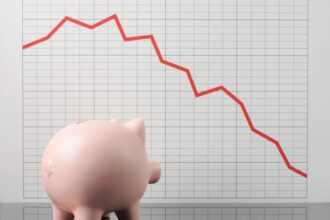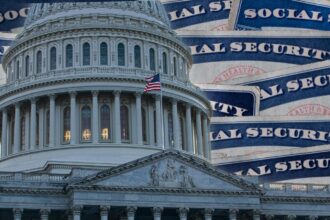The Saving Problem Secure 2.0 Aimed to Solve
Secure 2.0 is a pension reform package passed at the end of last year with provisions to lower taxes on retirement savings for high earners and to expand coverage and retirement savings. At least, that was the hope.
My colleague, Siavash Radpour, Research Director at the Schwartz Center for Economic Policy Analysis at The New School, and I unpacked the provisions to investigate how well Secure 2.0 will do to help those without an employer plan or significant levels of retirement savings. The sorry truth is that most people — over 63 million workers — have no retirement plan that will supplement their Social Security. And the average holdings for the worker with a retirement account is about $100,000.
What is the Savers Credit/Match in Secure 2.0 and how does it affect American workers’ retirement security?
Before Secure 2.0, the Savers’ Credit credited a low earners’ tax bill for contributions to a qualified retirement plan. It was irrelevant for many low income households because few have access to workplace retirement plans, few could afford to contribute to their accounts, and few had outstanding tax obligations that would let them benefit from additional tax credits. Also, the Savers’ Credit timing was off, making it less tangible to recipients and delinked from the savings habit. The tax credit appeared at tax filing time, severing the tie between savings and reward. If a worker got the credit it would look and feel like a windfall and likely increase spending, not savings.
Why will a retirement savings coverage gap still exist after all pieces of Secure 2.0, including the New Savers Credit, come into effect?
Secure 2.0 Savers Match doesn’t fix coverage and makes withdrawing money from retirement accounts too easy. Secure 2.0 changes the Savers Credit to a more tangible Savers’ Match. Under Secure 2.0, the credit is refundable. All low earners benefit even if they have no tax obligations. Another improvement is that the government will deposit the new Savers Credit directly into retirement accounts aimed at boosting savings — not spending. More liberal eligibility criteria adds to the savings boost. Secure 2.0 also makes it easier for small employers to set up low cost STARTER retirement plans and give employers quite generous subsidies towards plan costs and employer matches. But our back of the envelope calculations based on JCT projections show that in an optimistic scenario these incentives will increase coverage by about 10 million. It is a significant number, but it falls far short of covering the 63 million workers without access to retirement plans.
Not having access to a retirement plan at work is the major barrier to saving. Secure 2.0 did not help those without a plan get a convenient, low-barrier way to save. The new Secure 2.0 Savers Match won’t affect over 60 million workers without a workplace retirement plan.
Second, SECURE 2.0 makes it too easy to withdraw retirement savings before retirement. There are no early withdrawal penalties for the first $1,000 of emergency withdrawals and that is too bad because early withdrawals are one of the major causes of low retirement savings. If workers withdraw before retirement, they can’t get the Savers Match until they pay back the withdrawn amount or wait for 3 years. The upshot is that the “penalty free” withdrawal means losing the 50% savers match on their next $1,000 of contributions, which is a huge implicit penalty. This leakage will significantly reduce the Savers Match benefits.
What kind of legislation would improve the retirement savings?
Easy. Universal coverage. All workers, including gig workers and other self-employed workers need access to a safe and professionally managed retirement plan with low fees for their entire work lives. All workers need to save alongside their Social Security contributions. Despite more than 40 years of tweaks and incentives, coverage in employer sponsored plans is stuck at about 50%. Fortunately, legislation to provide universal retirement accounts, such as the Retirement Saving for Americans Act (RSAA) of 2022, has been designed and proposed in Congress by Republicans and Democrats in the Senate and House of Representatives. The bill would provide a retirement savings account to all workers without access to a workplace retirement plan.
Why would an ongoing match work better than an after-the- fact credit?
An employer match is a powerful tool that boosts retirement savings participation because workers see and “feel” the match as a reward every quarter, closer to the time that they make the hard decision to save. Especially for workers who are auto-enrolled in retirement plans, seeing the match helps prevent opt-outs during that crucial first year. Quarterly matching also allows workers to benefit from compounding interest for a longer.
Is the Retirement Savings for Americans Act Savers’ Match more generous than the current Secure 2.0. match?
Yes, significantly. The Retirement Savings for Americans Act Savers’ Match is more generous and more automatic. A more generous match increases both participation and savings amounts. The proposed automatic contribution plays an important role in folding workers into a savings system. Crypto exchanges and other businesses have been using similar strategies for years to bring in new costumers, motivate them to learn how their system works, and keep them engaged. I agree with the Economic Innovation Group’s Working Paper by Teresa Ghilarducci and Kevin Hassett, which finds that, based on evidence from the Thrift Savings Plan for federal employees, the proposed automatic contribution is one of the strongest features of the new American Worker Retirement Plan.
Bottom line: The Secure 2.0 Savers Credit is a baby step towards all Americans having a retirement plan but much more needs to be done for the American system to grow up into a robust retirement savings system.
Read the full article here










